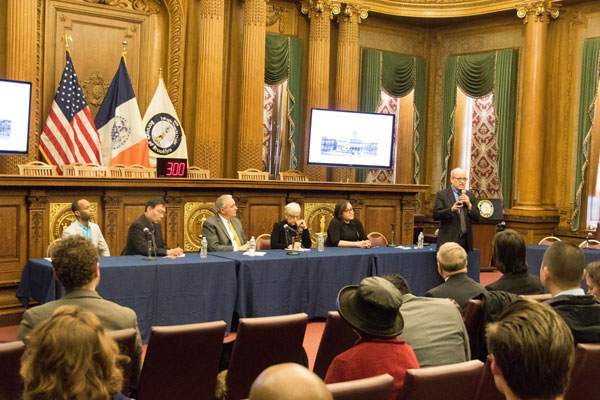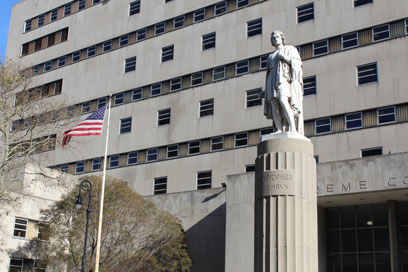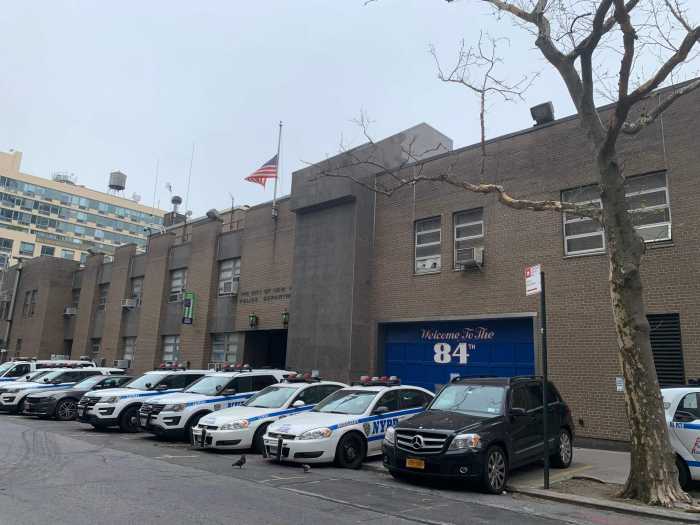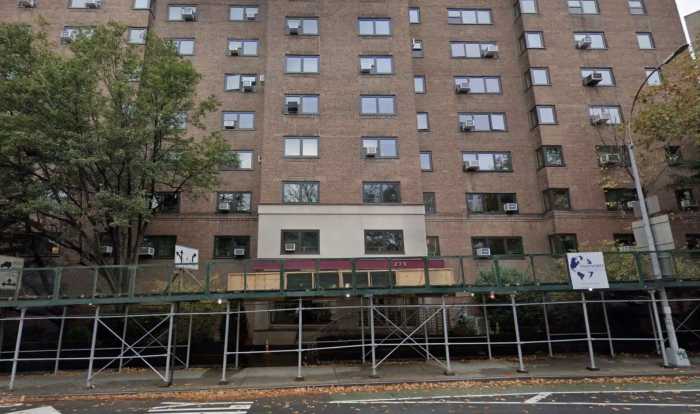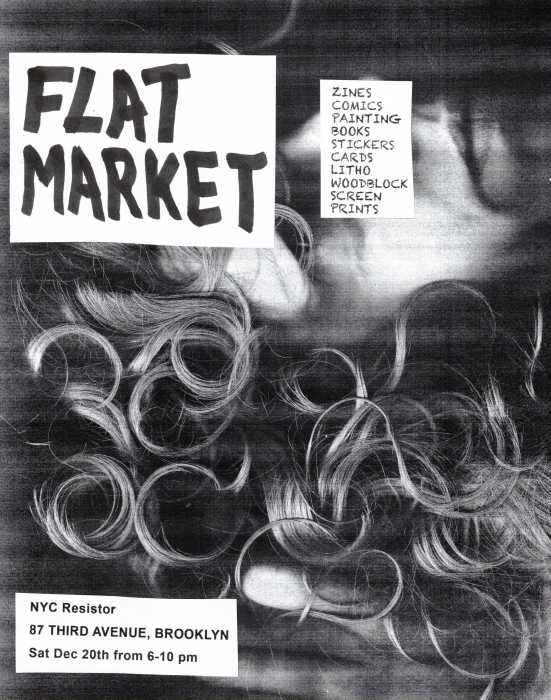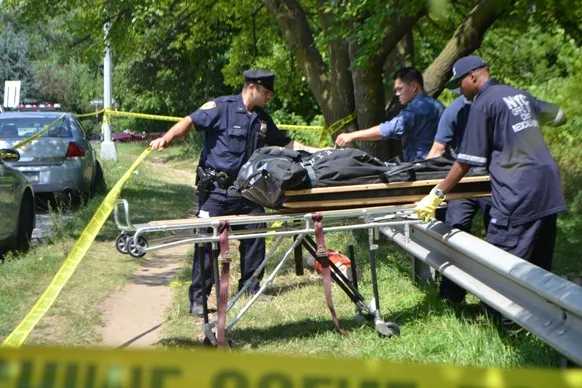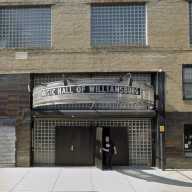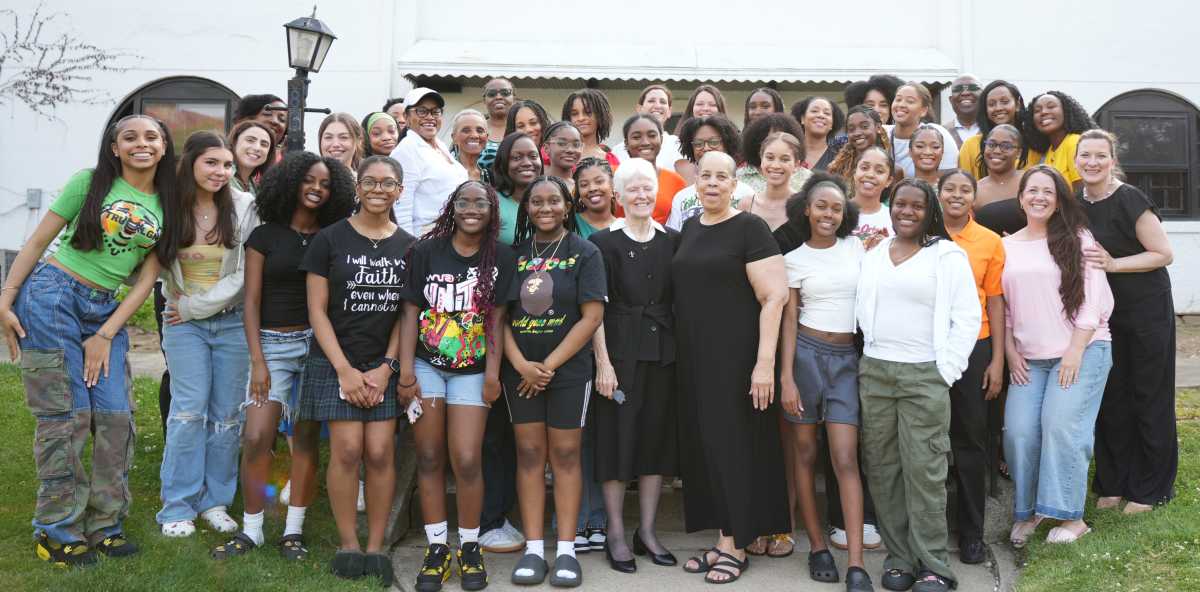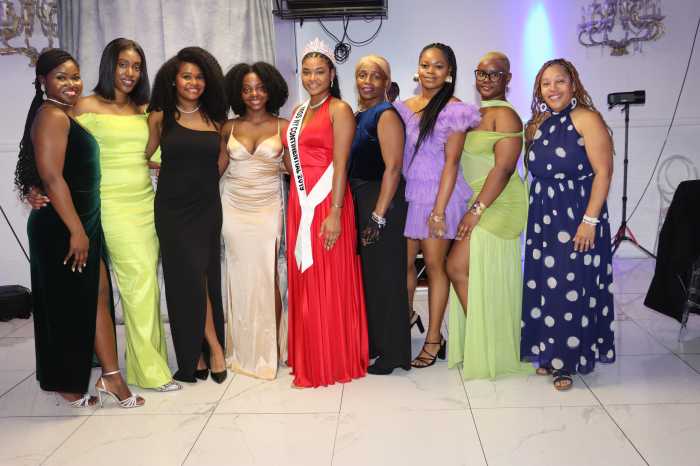It was a Columbus kerfuffle!
The city must tear down all statues of Christopher Columbus because the Italian explorer is not an American hero but a brutal colonizer who showed little regard for native life, some residents demanded at a Nov. 21 public hearing on city monuments at Borough Hall, where one outdoor effigy of the voyager stands nearby in a park bearing his name.
“The Columbus discovery narrative is an objective lie. If you come up here defending the lie, you either did not do your homework or you truly do not care — and I hope to God for the love of all black and brown people it’s the first one,” said Glenn Cantave, the head honcho of Movers and Shakers NYC, a group advocating for the removal of all of the explorer’s likenesses from the city. “Italians, you have every right to celebrate your heritage, but not at the expense of black and brown lives.”
Around 100 people packed into a meeting room for the hearing held by officials from the Mayoral Advisory Commission on City Art, Monuments, and Markers, which Mayor DeBlasio created after the fatal August riots in Charlottesville, Va. over the removal a statue of Confederate General Robert E. Lee from a local park.
The agency is charged with proposing guidelines for how to deal with sculptures on municipal property not consistent with the city’s values, according to the Department of Cultural Affairs’s head Tom Finkelpearl, who oversees it.
There are four Columbus statues across the city in addition to the one in Borough Hall plaza, including two on the distant isle of Manhattan and one in each of the outer boroughs of the Bronx and Queens, according to the Department of Parks and Recreation’s monument catalogue.
And they all should go, said another opponent, who likened the explorer to a murderer.
“He would kill indigenous people in the dozens,” said Williamsburg resident Javier Enriquez. “We keep saying he is not perfect — he is extremely far from perfect.”
Other attendees preached a more measured approach to dealing with the statues, however, acknowledging that Columbus had his problems but that he also achieved great things, some of which deserve to be commemorated.
“The pain that has surfaced in this area has to be addressed, but it doesn’t have to be addressed by removing statues,” said native Brooklynite Dianne Stillman. “He was a skilled navigator who started sailing at ten on commercial vessels.”
And some supporters of the adventurer rebuked the accusations that he is a stain on Italian culture, arguing that many locals with roots in the European country still revere its native son.
“Christopher Columbus was of Italian descent, and as such there is a significant cultural element of importance to New York City, as well as its Italian-American citizens,” said Steven Bamundo, a member of the Italian-heritage legal organization, Columbian Lawyers Association of Brooklyn and Staten Island.
Officials on Hizzoner’s statues commission, who are holding similar hearings in each borough, will conclude their review of city monuments on Dec. 7, according to a rep from the mayor’s office, who said the survey’s findings will be revealed later that month.
Any structures that agency officials deem worthy of more debate will then be discussed by local community boards and the city’s Public Design Commission, which has the final say on whether they should be changed or replaced, according to Finkelpearl.
Memorials of Columbus aren’t the borough’s only controversial monuments. In August, leaders at a Bay Ridge church removed a plaque commemorating a tree that General Lee planted there when he was stationed at nearby Fort Hamilton army base — the site of streets also named for the Confederate leader and his contemporary General Stonewall Jackson, which a Brooklyn congresswoman unsuccessfully petitioned the U.S. Army to change earlier this year.
But whatever is decided, tearing down statues will not rewrite history, according to a hearing attendee, who argued that all memorials should remain because they serve as powerful reminders of the past — whether good or bad.
“Regardless of what has happened, we can’t change it,” said South Dakota native and member of the Native American Sioux Nation Cheryl Dupris while fighting back tears.
